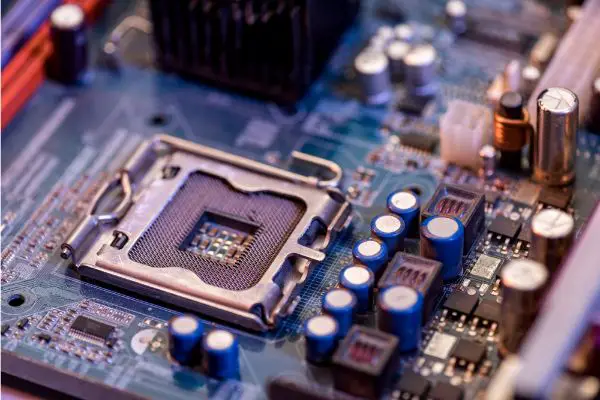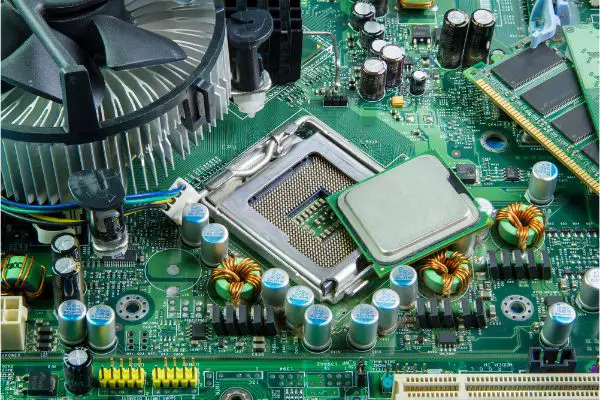Disclaimer: This post may contain affiliate links, meaning we get a small commission if you make a purchase through our links, at no cost to you. For more information, please visit our Disclaimer Page.
Purchasing used computer parts can be a nice way to get the custom system you want at a less expensive price than trying to find everything in new condition. You can also find ways to upgrade your current system with better, more modern components within a budget that you might need to limit.
Because there is a good market for computer users looking for parts like this, there is also ample opportunity for you to sell parts from your own systems that you don’t need any longer. The motherboard is one such component, and it is essential to the proper function of any computer. This is the main printed circuit board of any computer, and it acts as a sort of interface for the rest of the system. The motherboard helps all the other hardware inside your rig talk to each other.
Because of its importance, many computer hobbyists wonder if they can sell their used motherboards to others. We will cover this topic in our article here. As we take a closer look at things, we will also check out whether you need to make any special preparations in order to get your board ready for sale.
Along with that, we’ll talk about what information the motherboard might store once you take it out, some of the ways that you might price your item competitively, and how you might be able to find the appropriate markets in which to make these sales.
Table of Contents
Can You Sell a Used Motherboard?
Yes, it is entirely possible for someone to sell a secondhand motherboard effectively. You may meet some people in the community who are willing to buy almost any part that has been in someone else’s computer already, but they could draw some kind of hard line at the motherboard.
In most cases, this is because they might be concerned that the relative importance and delicate nature of the board itself means that purchasing it in a used state could be too much of a risk. While there are ways to test the board once they get it, they might not want to take the chance that it does not work, especially since this is a crucial piece in helping the computer operate.
However, you’ll find just as many people who are perfectly happy to take a secondhand motherboard as a way to get a nice upgrade that sits well within their budget. Part of a computer’s performance relies on its central processing unit.
The central processor can determine what kinds of programs you can run, how well they might run on your system, and how intense or high you can set many of the options that are available to those applications. Additionally, your CPU can determine how fast you’re able to pull up, view, and use the data that your computer stores in its memory.
If you have a CPU that is relatively new, you probably won’t see much in the way of gains from buying an upgrade to it. However, with a processor that is several years old, an upgrade can make a noticeable difference. In order to do this, you’ll probably need to swap out the motherboard first.
This is where buying a circuit board that someone else used already can save you some money, especially if you need to offset the cost of other parts like the processor, too. Different generations of processors use sockets or chipsets that might not be compatible with your existing board.
A person looking to make this big change to their system might want to buy a motherboard you’ve had in your system already.
If you want faster memory processes, that is yet another reason to consider a newer, more expensive board that you can purchase from someone else.
Faster transfers of data, better graphics processing units, repairing damage, or getting new features that your old system doesn’t have are just a few more examples of how selling a used board could turn into a lucrative deal for you.
Do You Need To Do Anything to a Motherboard Before Selling?
Typically, there is very little that you might need to do in order to prepare your pre-owned board for sale to a new user. Some members of the community may even suggest that you don’t need to do anything at all.
While this may be technically true, there are still a few steps you can take to make your board stand out from the rest and seem like a more attractive buy. Here are just some general guidelines you may wish to follow in preparation for the sale:
1. If the board is old, you may wish to blow off the dust carefully and make sure it looks as clean and new as possible.
2. If you’re removing the central processor, put a socket cover over the appropriate section in order to protect the motherboard.
3. You may wish to place the motherboard inside its own antistatic bag as a way to give it some extra shielding, too.
4. Your board may have some thermal interface material stuck to it. This is what you use to fill in gaps between the cooler and the CPU. If you see old thermal paste here, consider cleaning it off before you package the board. The buyer will almost certainly know that they need to add some fresh paste to it.
5. To wipe the settings, you should remove the board’s battery for about 20 seconds. In most cases, buyers will do this on their own when they know the board they are getting is used. However, it doesn’t hurt to do it yourself.
6. Be sure to include any accessories that came with the board when you package things up for sale.
7. Box up the motherboard with care, and use materials that can protect it during the shipping process.
Is There Personal Information Stored on a Motherboard?
No, your motherboard should not store personal data that another user could see upon the purchase and installation of the item. Although some other computer parts may store some data, taking out batteries or resetting them tends to wipe this information.
Additionally, the only part of a computer that stores any information that might be useful to another person in finding out personal things is the hard drive.
As long as you are not selling the drive, there is no risk of accidentally exposing some of your private information. If you are selling the hard drive, there are ways to do a complete wipe of it in order to erase any compromising data from the system.
Where Can I See How Much My Motherboard Is Worth?
There might be a few ways that you can check the value of your motherboard. Getting a precise value for a used computer part can be tricky, but you may be able to use a few methods in tandem with each other to get a good result.
Your first step should be to check the value of your board’s make and model from retailers. You can use sites such as https://pcpartpicker.com/ and https://pcpricer.net/.
This will give you a good indication of what your particular motherboard is worth if you bought it new today. Of course, you wouldn’t want to sell your secondhand board for this price, but it gives you a good ceiling that you should not attempt to go over.
Next, you can ask for recommendations from community forum members who might be familiar with the market trends for computer parts like the board you are selling. They can give you some rough estimates as to what you might be able to get for the model you have.
You may need to try to take an average of their responses, but it is one way to get some kind of idea as to where you should set the base price for your board.
Finally, it makes sense to check online secondary marketplaces where individuals just like you can sell their items like eBay. It’s also helpful if you go under “show only” and select “sold items”. There you can see what’s the price history of your used motherboard.
You can check the prices that motherboards go for in general, however if you do not select this option, it may show you a wide range of prices or inaccurately high ones.
Even if you do not find yours there, you may find one within the same family of boards, and this could give you a more accurate idea of how to set the price for your own item. Combining all of these suggestions, you should be able to come up with a price that is worth it to you and competitive to many buyers.
Where Can I Sell My Motherboard?
Although there are many places online to post sales for computer parts, your best bet may be secondary market sites that allow you to set your own prices and compare them with similar items. The biggest one being eBay, that you used to price check.
If you don’t want to set a firm asking price, you can try auctions that allow you to set up a starting bid instead. Keep in mind though that if you don’t have a lot of views on your listing, the ending bid may be lower then what you’re anticipating
Buyers may place their bids, and you could get something that approaches the price for which you’d like to sell the item. Otherwise, you can try online local marketplaces such as Craigslist or FaceBook Marketplace to sell items to people in your general area.
Finally, you might find tech forums or related websites that specialize only in selling computer parts, and it is possible that your motherboard might fetch a fairer price here. For that, we recommend https://www.reddit.com/r/hardwareswap/
Additionally, let’s say have trouble selling or might be too tight on time. Luckily, there are also some options for you to trade in your motherboard. The most popular ones being Amazon Trade-In and BestBuy Trade-In. The downside, however, would be they pay you in store credit or your motherboard is too old to be traded in.
Conclusion
Selling your computer’s parts can seem like a difficult task at first, but it only takes a bit of research on your part. If you know the motherboard works, is a late enough model that some other users would consider it an upgrade, and you prepare it well, there is a good chance that you can sell it to fund upgrades to your own system.
The board doesn’t store personal information, and there are ways that you can clean and package it for safe shipping in order to ensure that it arrives in good working order.



